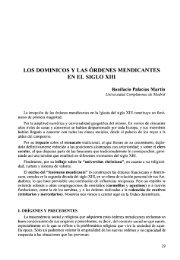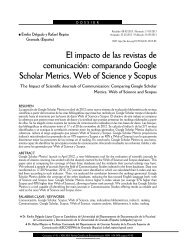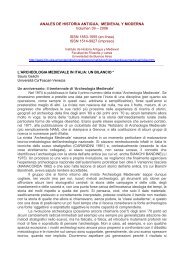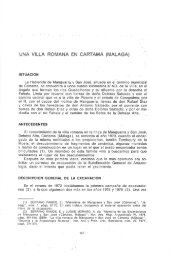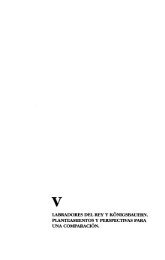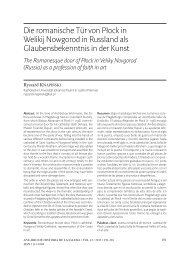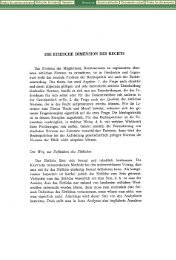You also want an ePaper? Increase the reach of your titles
YUMPU automatically turns print PDFs into web optimized ePapers that Google loves.
60<br />
SANCHO EL SABIO<br />
naturaleza del euskara hubo de ser importante. Prueba de ello es que encargase<br />
a Samuel Sainthill, comerciante británico estrechamente ligado<br />
a la villa de Bilbao, que le consiguiese alguna obra acerca de la lengua<br />
vasca. Sainthill así lo hizo (véase Dodgson 1899), remitiéndole en 1661<br />
el manual de lenguas manuscrito que Rafael Micoleta, presbítero bilbaíno,<br />
escribiese en 1653 con el título de Modo breve de aprender la<br />
lengua vizcayna.<br />
Tras el que suponemos concienzudo estudio de la obra de Micoleta,<br />
estas fueron las conclusiones expuestas por Browne (1684: 136) en su<br />
ya referida carta:<br />
the present Basquensa, one of the minor Mother Tongues of Europe, 25 is not<br />
without commixture of Latin and Castilian, while we meet with Santifica,<br />
tentationeten, Glaria, puissanea, and four more in the short Form of the<br />
Lord’s Prayer, set down by Paulus Merula: 26 but although in this brief Form<br />
we may find such commixture, yet the bulk of their Language seems more<br />
distinct, consisting of words of no affinity unto others, of numerals totally<br />
different, of differing Grammatical Rule, as may be observed in the Dictionary<br />
and short Basquensa Grammar, composed by Raphael Nicoleta, a Priest<br />
of Bilboa.<br />
En este breve texto, Browne condensa toda una serie de acertadas<br />
apreciaciones sobre la lengua vasca. Considera que, a pesar de la importante<br />
presencia de préstamos latinos, el vasco es una lengua distinta<br />
de las románicas al diferir su léxico, sus numerales y sus reglas gramaticales.<br />
En esta mención a la “Grammatical Rule” estriba el gran mérito<br />
de Browne, pues es una de las primeras veces en la que un autor acierta<br />
a comprender, y lo plasma por escrito, que para la correcta comparación<br />
entre lenguas no basta con examinar su léxico sino que también es necesario<br />
confrontar la estructura gramatical de las mismas.<br />
Hasta aquí los aciertos de Browne. Pero, justo antes del párrafo que<br />
acabamos de transcribir, Browne (1684: 135-136) ya había hablado sobre<br />
el euskara:<br />
But shut up in Angles and inaccessible corners, divided by Laws and Manners,<br />
they often continue long with little mixture, which hath afforded the<br />
lasting life unto the Cantabrian and British Tongue [...] But surely no Languages<br />
have been so straitly lock’d up as not to admit of commixture. The<br />
Irish, although they retain a kind of a Saxon Character, yet have admitted<br />
many words of Latin and English. In the Welch are found many words from<br />
25 La calificación del euskara como “one of the minor Mother Tongues of Europe”, aparece<br />
en la “Diatriba de Europaeorum linguis” de Scaliger, escrita por este en 1599 aunque<br />
publicada, por vez primera, en la Cosmographiae Generalis de Merula (1605: 271-272).<br />
26 Merula (1605: 302) había reproducido la Oratio dominica en vasco tomándola del Testamentu<br />
Berria (1571) de Leizarraga. Las erratas del texto de Browne (fuesen suyas o del<br />
editor) son numerosas, pues las formas correctas, conforme aparecen en el padrenuestro de<br />
Merula, serían Sanctifica, tentationetan, Gloria y puissança.<br />
Sancho el Sabio, 35, 2012, 47-65



